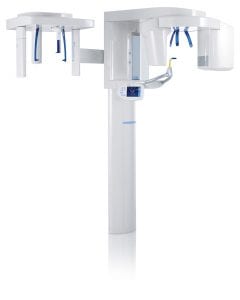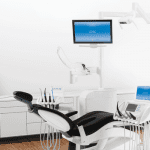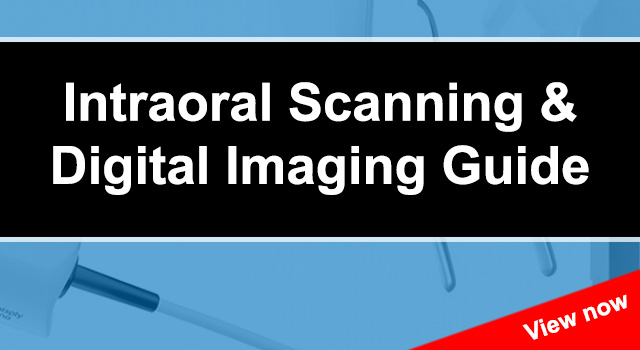Simplifying Cementation True simplification is often easier said than done, particularly for complex procedures such…

The continued rise of digital dentistry
Jason Longden, ConnectDental Manager at Henry Schein Dental discusses how digital dentistry is increasingly becoming the mainstream as patients welcome the benefits of same day dentistry.
For those of us working in the UK dental industry, we have seen just how far digital dentistry has come over recent years. As digital technology has become the norm in almost every walk of life, it is exciting to see how patients are reacting to, and even demanding, the latest treatment options that give them fast, aesthetic results – in just one visit.
An intraoral scanner (IOS) is often a clinician’s – and patient’s – first introduction to digital dentistry. Small, non-invasive, and far more comfortable than conventional impressions, an IOS simplifies clinical procedures and allows for instant communication with the laboratory as required, as well as clearly demonstrating treatment options to patients. As technology has advanced, every intraoral scanner on the market has its own features that make it unique, offering clinicians the chance to select an IOS best-suited to their individual needs.
The popularity of this technology is reflected in the fact that the global intraoral scanners market was valued at $273 million in 2016 and is estimated to reach $557 million in 2023[i].

We know that chairside CAD/CAM technology has been around for 30 years, but what is really driving the digital market is the advances in scanning technology, design software, and milling capabilities that are now becoming more accessible and affordable for clinicians and technicians alike.
Digital imaging has made a big impact on the industry, especially for clinicians looking to do chairside, same day dentistry. The IOSs currently on the market are designed to produce highly accurate and detailed scans that can be studied at extreme magnification, leading to higher clinical success rates and more streamlined, cost-effective workflows.
The advances in digital technology are having a profound effect on X-ray and scanning techniques in general, especially the increasing use of the Orthopantomogram (OPG). It is now possible using the OPG for clinicians to have a panoramic view of all the teeth in the lower and upper jaw in a single film, demonstrating the number, position, and growth of teeth. This also includes those teeth that have not yet surfaced or erupted. Whether in 2D or 3D, typically, these images are used to provide detailed information on wisdom teeth, bone loss, orthodontic assessment, implantology, problems concerning the temporomandibular joint, and locating the potential cause of dental pain.
The evolution of same day dentistry
Early CAD/CAM systems were bulky, expensive, and labour-intensive and as a consequence, the dental industry was rather slow to adopt this new technology. However, today’s manufacturers have created CAD/CAM systems tailor-made for the dental practice workflow with portable, wireless chairside scanners, powerful design software and compact chairside milling machines. Instead of computer whizz-kids being the only ones able to operate this technology, now clinicians and their team can be scanning arches intraorally with only the briefest of training sessions.
CAD/CAM dentistry along with the development of cutting-edge hybrid, nano and glass ceramic materials have given clinicians the opportunity to provide same day crowns, bridges, inlays and onlays in the practice that are strong, accurate and aesthetic. The new generation of chairside systems are enabling CAD/CAM dentistry to become mainstream within everyday practice, providing unprecedented ease of use, accuracy and speed, simplifying every aspect of restorative dentistry from treatment planning, placement through to the final restoration. The ability to complete such restorations in just one visit is also something that is proving to be of great value to today’s busy patients as well as attracting new patients and retaining existing ones.

From chairside to lab
Not every clinician has the inclination, time or experience to complete every CAD/CAM case in the practice, especially in regard to highly aesthetic, anterior cases, and many still rely heavily on the
experience and expertise of their chosen dental lab. With the increase in ‘open’ digital technology there is now fast and secure connectivity between the practice and the lab without the concern of being tied to a specific system or manufacturer. Labs can also provide the additional service of checking the accuracy of a digital scan while the patient is still in the chair, ensuring no detail has been missed and doing away with the need for costly remakes.
Here to support you
I believe that this is a fascinating time to be involved in all the elements that make up the digital workflow. At Henry Schein Dental you can rely on us to provide state-of-the-art dental technology solutions, with all the knowledge, service, and support needed to help practitioners navigate the rapidly changing world of digital dentistry and deliver outstanding clinical results.
[i] https://www.alliedmarketresearch.com/intraoral-scanners-market



